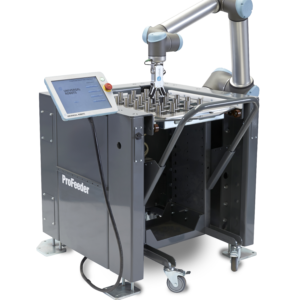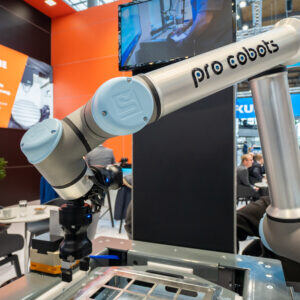16.10.2019
Machining centers – success factors for automation and industry 4.0
Automation at the EMO in Hanover
The topic of Industry 4.0 is currently dominating the manufacturing sector like no other. However, medium-sized companies and contract manufacturers should not be intimidated by the associated challenges now. Even individual digitization and automation measures already ensure greater efficiency in production. Thus, the path leads step by step to the implementation of unmanned manufacturing processes, data management or remote maintenance. On the machine tool side, a simple CNC control, an international interface standard and a Windows-based operating system facilitate the necessary conversions.
Pliening, Germany, Oktober 2019: We can distinguish three stages on the way to automation: The first stage is the cobot as the operator’s “third arm”. It is always used when simple processes that can be programmed in a short time are to run parallel to the operator’s work. Examples of automated assistance, HURCO showed for example at the EMO in Hanover in different variants. These include the “ProFeeder” loading cobot. It translates the movement performed manually with the robot arm into a program and then executes it independently.
Automated pallet handling
In the second stage, data on the workpieces to be handled is transferred from the machining center directly to the robot via I/O interface, thus extending machine run times into a second or third shift without the need for an operator to be standing directly at the machine. This is made possible by pre-equipping a pallet or part loading system. For example, for automated pallet handling on the VMX 60 SRTi 5-axis machining center, HURCO’s WinMax control transmits predefined commands via an I/O
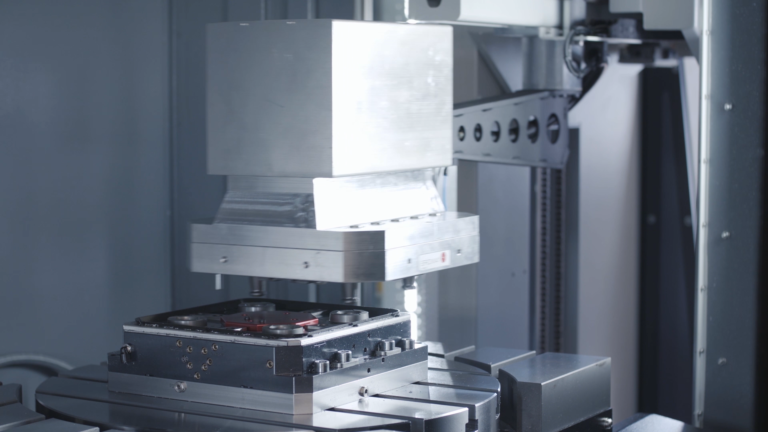 interface to the robot. The robot interprets the data based on its programming and inserts the pallet with the desired workpieces into the machine. This solution consists of a machine and automation. With HURCO machines, the “Joblist” option can then be used, for example, to bundle varying machining programs without additional programming effort and then execute them one after the other. The option automatically loads the data associated with each workpiece using a simple numerical assignment.
interface to the robot. The robot interprets the data based on its programming and inserts the pallet with the desired workpieces into the machine. This solution consists of a machine and automation. With HURCO machines, the “Joblist” option can then be used, for example, to bundle varying machining programs without additional programming effort and then execute them one after the other. The option automatically loads the data associated with each workpiece using a simple numerical assignment.
For contract manufacturers, the quality of so-called “robot teaching” is important. Without customer-specific knowledge of the parts and pallet handling, a robot is completely helpless. An efficient automation solution is only created by combining machine and teaching. If suppliers of automation solutions offer a comprehensive teaching concept for the machines or the operators in order to create future processes in the robot’s directory, this is a sign of quality.
A short instruction is sufficient
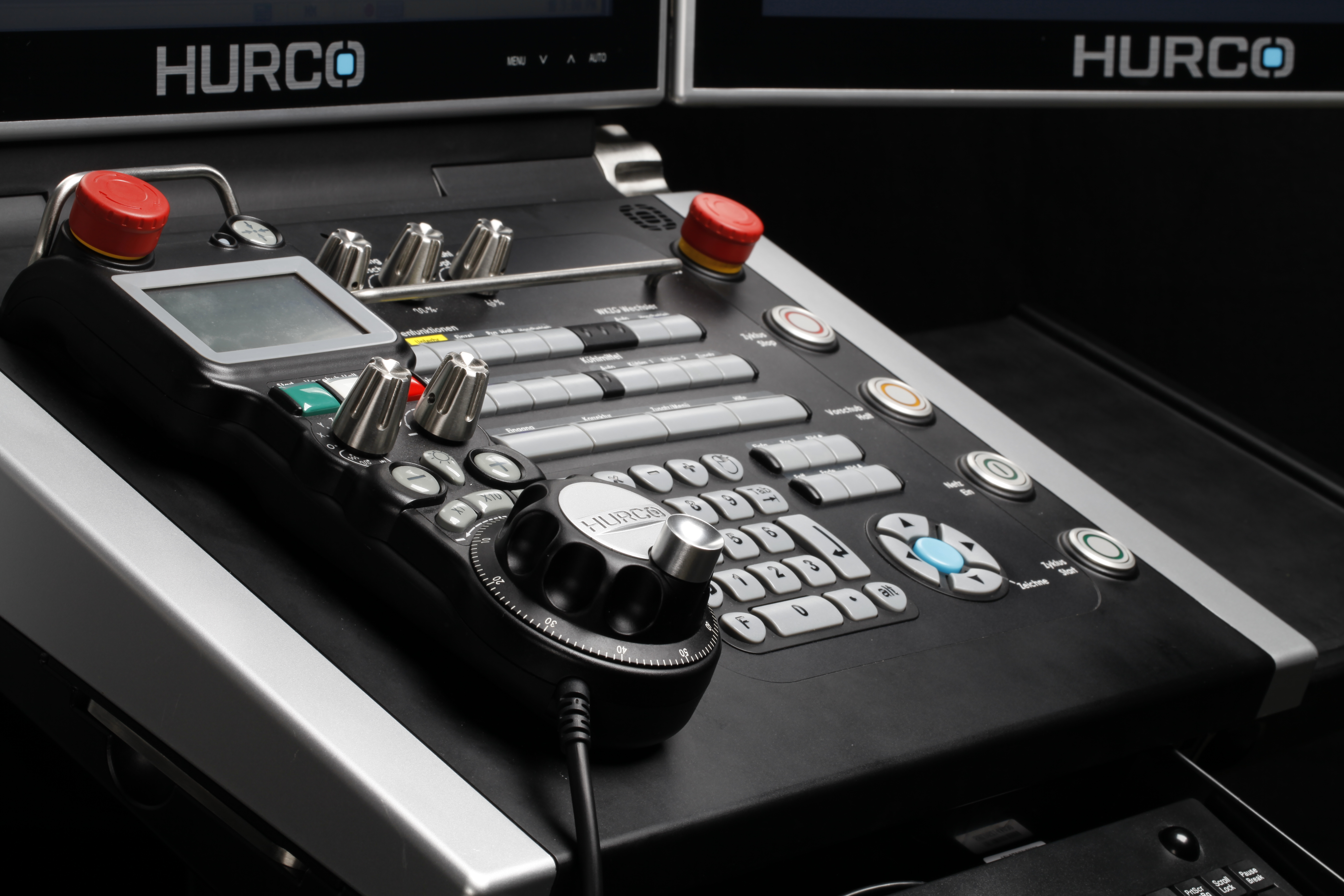 The implementation variant with the WinMax control as master makes handling simple and user-friendly. In this way, we are geared to the needs of small and medium-sized manufacturing companies, because they have to master the transformation to Industry 4.0 with scarce personnel resources. In this way, competitive advantages can be developed simply and systematically, while at the same time making production fit for the future. The operator only needs to master the control system for this solution. Extensive training is not required, a short briefing is sufficient. Even with pallet handling, with this type of automation the operator only has to pay attention to the correct pallet numbers or part numbers.
The implementation variant with the WinMax control as master makes handling simple and user-friendly. In this way, we are geared to the needs of small and medium-sized manufacturing companies, because they have to master the transformation to Industry 4.0 with scarce personnel resources. In this way, competitive advantages can be developed simply and systematically, while at the same time making production fit for the future. The operator only needs to master the control system for this solution. Extensive training is not required, a short briefing is sufficient. Even with pallet handling, with this type of automation the operator only has to pay attention to the correct pallet numbers or part numbers.
Process control system for complex production processes
Process control system for complex production processes
In the case of multiple automation, a comprehensive solution via the DNC interface is recommended. In this case, a higher-level process control system takes over control. As the master, the system coordinates all machines and robots integrated into the automated manufacturing process. It initiates programs and robotic
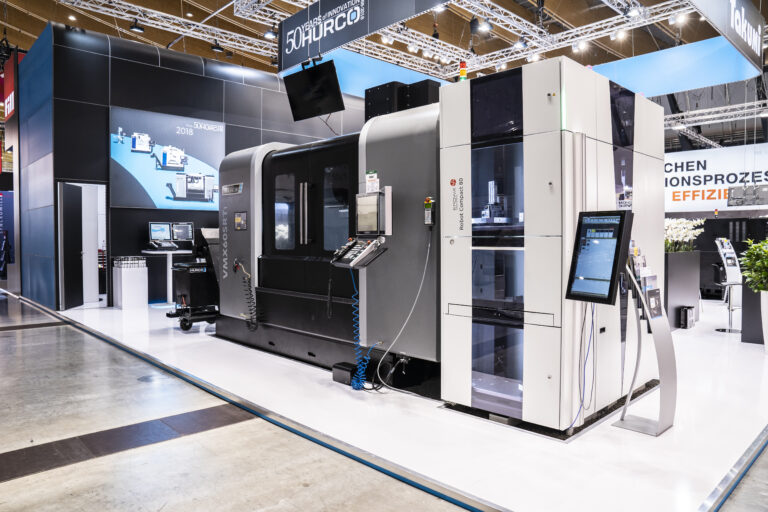
It initiates programs and robotic processes, monitors and documents the production sequence and informs operators or the customer according to their specifications. HURCO demonstrated this variant at EMO 2019 with the “Job Manager” from EROWA. Such solutions are a solid introduction to unmanned production. Process control systems also take over planning tasks, such as the sequence planning of production steps.
HURCO machining centers can be combined with almost all loading systems for machine tools to form individual automation solutions and production chains. A common constellation is as follows: A robot operates two CNC machining centers docked to the right and left of the loading system. Automated loading and unloading of the CNC machine enables capacity expansion in single-part and small-batch production without additional manpower for machine operation. The loading robot flexibly changes tools and grippers in this process.
Network and interface architecture
HURCO machining centers can be easily integrated into company networks via the Windows Embedded interface. The transport of machine and operating data is handled by the MT-Connect software interface. Network-supported DNC interfaces are used for communication between the machines. This network and interface architecture enables individual adaptations of the systems to customer requirements and the setup of integrated overall production systems as well as blockchain solutions between contract manufacturers and their clients. It is an optimal prerequisite for the fast and application-oriented implementation of automation solutions, data management or remote maintenance. In this way, we arrive at the third stage of automation: All manufacturing steps run here directly at the machine without an operator.
HURCO shows what such a process could already look like in a YouTube video: There, an operator controls a machining portal remotely via the voice assistant Alexa. In the current day-to-day production of most contract manufacturers, mobile assistants still play a subordinate role – if at all – but many use machine control to implement individual Industrie 4.0 processes in their production.
Data management with HURCO MT-Connect
HURCO machines can already be equipped with an operating data acquisition system at the factory. This allows the evaluation of all machine and operating data. Via the MT-Connect option and by means of an Extended Shop Floor Manager, customers can access their machines in real time. This works independently of the operating system and via any Internet browser from both smartphone and tablet. The Extended Shopfloor Manager provides a complete control architecture and can therefore also be used by HURCO service and application technicians for external maintenance.
Automation with HURCO on film: https://www.hurco.de/video/automatisierung-mit-hurco/
 Contact:
Contact:
HURCO Werkzeugmaschinen GmbH
Alexandra Banek
Gewerbestraße 5 a
85652 Pliening
Phone +49 89 905094 29
abanek@hurco.de

